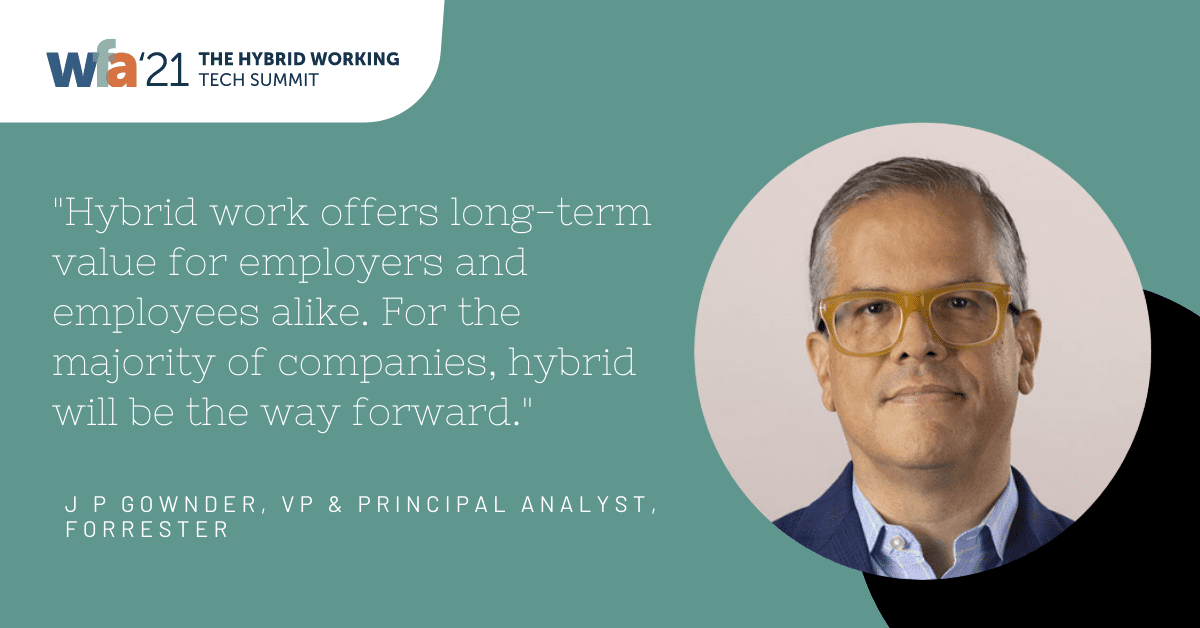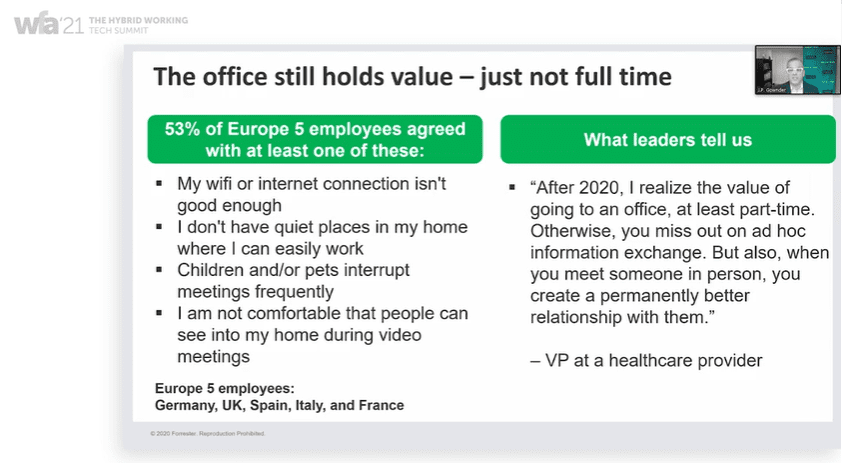For many of us, prior to the pandemic, office-based work was the norm and we would commute each day to work from an office location 4 or 5 days a week. Once the pandemic hit and numerous worldwide lockdowns were enforced, the majority of organizations found themselves forced into a fully remote working situation, with all employees working from home.
But now, having moved through a year of disruption, the world is trying to figure out the long-term model of work that will emerge from the last 12 months. Globally, leaders are trying to accommodate the present, whilst planning for a future that will include office locations as well as remote working.
What is Hybrid Working?
Indeed, there is no one answer, as organizations will develop different strategies based on their capabilities, key verticals, and needs. But there are some key trends that we can draw from. Put simply, hybrid working is a mix of office-based work and working from home (or another location), driven by user choice and collaboration needs. Hybrid teams are generally those whereby some people are working in offices and some people are not.
In his opening keynote at the WFA ’21 conference, Forrester VP and Principal Analyst, J. P. Gownder, effectively described the ‘Office + Anywhere’ hybrid work strategy. This is born from research conducted by Forrester. This model understands hybrid work to include an office as well as remote working options and is anticipated to be the most common post-pandemic, predicted by Forrester to account for 60% of the world.
Both employees and leaders believe the world has changed and whilst Forrester research shows around half of employees across the US and Europe hope to continue working from home more post-pandemic, many agree there is something missing. And that thing relates to the culture and collaboration associated with an office environment. This is where hybrid work comes in, combining the desired flexibility of remote working with the culture and collaborative benefits of an office.
Why does it matter?
As J. P.’s session made clear, ‘hybrid work’ is a topic that matters for two key reasons:
- The anywhere-work revolution is here to stay for the long-term – expectations have changed among employees and leaders and there is a new mutual understanding of the value-add of remote working.
- Flexibility is a key driver of employee experience – and as we all know a good employee experience equates to better business success, whether that’s seen in staff retention, or through the spill-over into customer experience, for example.

The Work From Anywhere Journey
So, with hybrid working here to stay and providing a plethora of benefits for both employers and employees (more on this later!), what can we be doing to embrace the work from anywhere journey and build a hybrid work strategy for the future?
J. P. offers some jumping off points for assessing your readiness on the work from anywhere journey and where to focus your long-term ‘Office + Anywhere’ work strategy:
- Combine technology with cultural changes to drive hybrid working – these need to reinforce one another to transform your business.
- Co-create with your workforce – Keeping an eye on focus groups or conducting internal surveys with employees to understand what their preferences are is not only a good employee experience, but it will give you accurate insights to help build the best hybrid work strategy for your organization.
- Don’t discount the office – it still holds value, just not full time.

To learn more about improving digital experience in the anywhere workplace, the ‘Office + Anywhere’ hybrid work strategy, and to hear more key Forrester research insights, replay J. P. Gownder’s session here!









